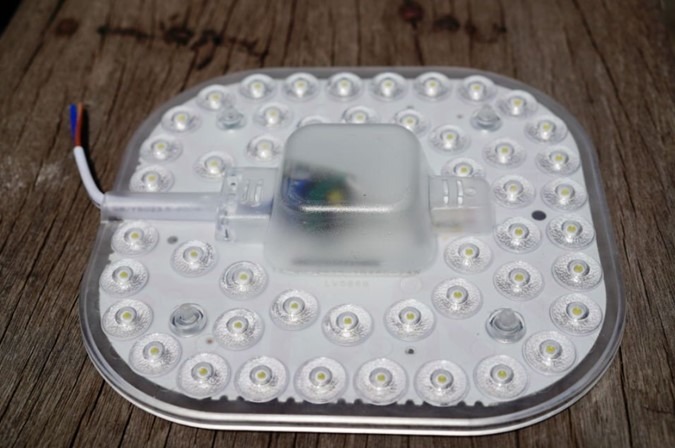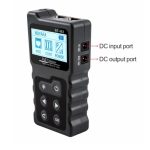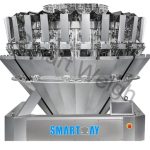Introduction to UV LED Modules
UV LED modules are compact electronic devices that emit ultraviolet light in a controlled manner. These modules consist of an array of light-emitting diodes (LEDs) that generate UV radiation when an electrical current passes through them. UV LED modules come in various sizes and configurations to cater to different applications, making them highly versatile.
How UV LED Modules Work
UV LED modules utilize a combination of semiconductor materials to produce UV light. When an electrical current is applied to the LED chip, electrons and holes recombine, resulting in the emission of photons in the ultraviolet spectrum. The specific wavelength of the emitted UV light depends on the composition of the semiconductor material used. UV LED modules can emit UVA, UVB, or UVC light, each with its unique applications.
Applications of UV LED Modules
Industrial Applications
UV LED module have gained significant traction in industrial applications. They are used for curing and bonding processes in industries such as automotive, electronics, and construction. UV-curable adhesives, coatings, and inks can be rapidly cured using UV LED modules, enabling faster production cycles and improved efficiency.
Medical Applications
In the medical field, UV LED modules find applications in phototherapy, dental curing, and medical device sterilization. UV light has proven effective in treating skin conditions like psoriasis, vitiligo, and eczema. UV LED modules provide a safe and precise way to deliver controlled doses of UV radiation for therapeutic purposes.
Sterilization and Disinfection
UV LED modules are widely employed for sterilization and disinfection purposes. They can eliminate harmful microorganisms, including bacteria, viruses, and mold spores. UV disinfection is commonly used in water treatment systems, air purifiers, food processing, and healthcare facilities.
Advantages of UV LED Modules over Traditional UV Light Sources
UV LED modules offer several advantages over traditional UV light sources, making them the preferred choice in various applications.
Energy Efficiency
UV LED modules are highly energy-efficient compared to traditional UV light sources. They convert a significant portion of the electrical energy into UV radiation, minimizing wastage and reducing overall power consumption. This efficiency translates into cost savings and environmental benefits, making UV LED modules a sustainable choice.
Longevity
UV LED modules have an impressive lifespan, outlasting traditional UV light sources by a considerable margin. With proper usage and maintenance, UV LED modules can operate for tens of thousands of hours. This extended lifespan reduces the frequency of replacements, saving both time and money for users.
Environmental Friendliness
Unlike traditional UV light sources that contain mercury or other hazardous materials, UV LED modules are environmentally friendly. They do not emit harmful substances during operation, eliminating the need for special disposal procedures. UV LED modules contribute to a greener and safer working environment.
Safety
UV LED modules are designed with safety in mind. Unlike conventional UV lamps that emit a broad spectrum of UV light, UV LED modules can be engineered to emit specific wavelengths, minimizing the risk of exposure to harmful UV-C radiation. Additionally, UV LED modules have instant on/off capabilities, eliminating warm-up time and reducing the chances of accidental exposure.
Factors to Consider when Choosing a UV LED Module
When selecting a UV LED module for a specific application, several factors should be taken into account:
Wavelength
Different UV wavelengths offer varying levels of effectiveness for different applications. It is crucial to choose a UV LED module that emits the appropriate wavelength required for the desired outcome. Whether it’s UV-A for curing or UV-C for sterilization, selecting the right wavelength ensures optimal results.
Power Output
The power output of a UV LED module determines the intensity of the emitted UV radiation. The desired power output depends on the application requirements, such as the size of the target area or the level of sterilization needed. It is essential to select a UV LED module with the appropriate power output to achieve the desired results efficiently.
Lifetime
Consider the expected lifespan of the UV LED module. A longer lifespan means fewer replacements and lower maintenance costs. Look for modules with reliable lifetimes to ensure long-term performance and cost-effectiveness.
Thermal Management
Heat dissipation is a critical factor in UV LED module performance. Efficient thermal management systems ensure that the module operates within the optimal temperature range, preventing overheating and maintaining stable output. Look for modules with robust thermal management mechanisms for consistent and reliable operation.
Customization Options
Different applications may require specific features or configurations. Some UV LED module manufacturers offer customization options such as form factors, beam angles, or mounting options. Evaluate the customization options available to ensure the module aligns perfectly with your application requirements.
Maintenance and Care Tips for UV LED Modules
To maximize the lifespan and performance of UV LED modules, the following maintenance and care tips should be followed:
Cleaning
Regularly clean the surface of the UV LED module to remove any dust or contaminants. Use a soft, lint-free cloth or a mild cleaning solution recommended by the manufacturer. Avoid using abrasive materials or harsh chemicals that could damage the module.
Storage
If UV LED modules are not in use for an extended period, proper storage is crucial. Store them in a clean and dry environment, away from direct sunlight and extreme temperatures. Follow the manufacturer’s guidelines for storage conditions and duration.
Regular Inspection
Periodically inspect the UV LED modules for any signs of damage, discoloration, or reduced performance. Check the electrical connections, lenses, and housing for any abnormalities. If any issues are detected, contact the manufacturer or a qualified technician for assistance.
Proper Power Supply
Ensure that the UV LED modules are connected to a stable and appropriate power supply. Voltage fluctuations or incorrect power input can affect the module’s performance and lifespan. Follow the manufacturer’s specifications for power requirements and use reliable power sources.
Future Trends and Innovations in UV LED Modules
The field of UV LED modules is continuously evolving, and several future trends and innovations are worth noting:
Increased Efficiency
Manufacturers are working on improving the efficiency of UV LED modules, resulting in higher output and reduced power consumption.
Wider Wavelength Range
Research and development efforts are focused on expanding the range of available UV wavelengths, enabling new applications and possibilities.
Miniaturization
Advancements in LED technology allow for smaller and more compact UV LED modules, opening up opportunities in portable devices and integrated systems.
Enhanced Customization
UV LED module manufacturers are offering more customization options to meet specific application requirements, including tailor-made wavelengths, power outputs, and form factors.
Advanced Cooling Solutions
Innovations in thermal management systems aim to address the heat dissipation challenges associated with UV LED modules, further improving their performance and reliability.
Conclusion
UV LED modules have revolutionized the use of ultraviolet light in various industries and applications. Their energy efficiency, longevity, environmental friendliness, and safety make them a superior choice over traditional UV light sources. When choosing a UV LED module, consider factors such as wavelength, power output, lifetime, thermal management, and customization options. Proper maintenance and care, along with regular inspection, ensure optimal performance and prolong the module’s lifespan. With ongoing advancements and future trends, UV LED modules will continue to drive innovation and advancements in ultraviolet light applications.




